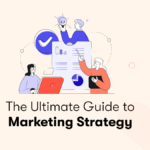How do you start an online business from home and with no money? Is this even possible?
The short answer is yes. There are thousands of successful online businesses that started with no money and today they are making thousands of dollars in revenue.
In fact, many of them have no physical presence but are operated from home with remote teams.
To start an online business you don’t need to have prior knowledge on how to run a business. Running an online business is different than managing a brick-and-mortar store.
I’ve started my first online business 18 years ago without knowing anything about entrepreneurship or how to operate an Internet business.
Over the years I’ve had successes and failures but most importantly I created a framework that beginners can follow and increase their chances of establishing a successful online business on the first go.
In this complete guide, I’m going to give you the steps to follow to start a business online from scratch and from the comfort of your own home.
While it’s impossible to start a business for free, you don’t have to pay a fortune to get a business off the ground, and I’ll give you all the details.
Since you’re convinced that you want to become an online entrepreneur and start making money online (hence why you are reading this article now), I’ve added the actionable steps first but towards the end of this guide, you can learn more about how online businesses work and other useful information.
- How to start an online business (15 Steps)
- Is it an online business for you?
- How much does it cost to start an online business?
- How much money can you make online?
How to Start an Online Business Step By Step
These are the 15 steps to follow to start an online business from scratch.
- Decide what type of online business to start
- Find your niche
- Evaluate your idea
- Analyze your potential competitors
- Identify your target audience
- Decide on your brand name and register a domain
- Setup a website for your business
- Learn what digital marketing is all about
- Create a digital marketing plan
- Optimize your website for Search Engines
- Create a content marketing plan and start publishing content
- Establish your social media presence
- Grow your email list
- Optimize your website for conversions
- Get professional help
1. Decide what type of online business to start
The first thing to decide is what kind of online business to start. As you’ll see below there are many options and depending on the type you choose, you’ll have different ways to monetize your business and make money.
The most popular types of online businesses are:
- eCommerce stores selling physical products (Amazon, Etsy, etc)
- Websites selling digital products (ebooks, online courses, etc)
- Consulting / Coaching (Personal development coach, fitness coach, etc)
- Selling Services (digital marketing agencies, software development, web design, etc)
- (Saas) Software as a Service (online tools, subscription-based model)
- Online News Publications (HuffPost, etc)
- Niche Blogs (travel blogs, clothing and fashion blogs, etc)
The most popular methods of making money from your online business are:
Selling your own products (physical or digital) – Selling products directly to consumers on your own hosted website or through an online store on a third-party marketplace like eBay, Amazon, Etsy, Udemy, Flippa, etc.
Advertising Revenue – Making money by selling ad space on your website either directly to advertisers or through an online platform like Google AdSense.
Drop-Shipping – Selling physical products on your own store but shipping and handling is done by the product manufacturer or B2B provider. You get a commission every time a product is sold.
Affiliate marketing – You refer clients to the seller’s website (for either physical or digital products) and when a product is sold, you get a commission.
Revenue from consulting services – You get paid for providing consulting services online (by email, skype or other means).
Subscription-based model – You make money from people subscribing to your monthly services (for example hosting, online tools, etc)
RESOURCES TO LEARN MORE
- How to make money with a blog – How to start a blog business and make money from it.
- How to start a profitable website – How to make a profitable website without selling anything.
- Best business courses – a list of online courses to build your business skills.
- The B2B SaaS Pricing Masterclass – if you’re planning on starting a SaaS business based on the subscription-based model, read this report to understand how SaaS pricing works.
2. Find your niche
Now that you have an idea of the different types of online businesses, the next step is to find your niche. In other words, to come up with an idea that can be transformed into an online business.
From experience, this is the most difficult step because it has a lot of uncertainty. Nobody can tell you in advance if your idea is good or not and no one can guarantee that your business will succeed or fail.
It’s a risk that all business owners have to take but this should not hold you back. The only way to find out if your idea is good is to try it and even if you fail, there are so many things to learn from failures that bring you closer to success.
How to find your niche?
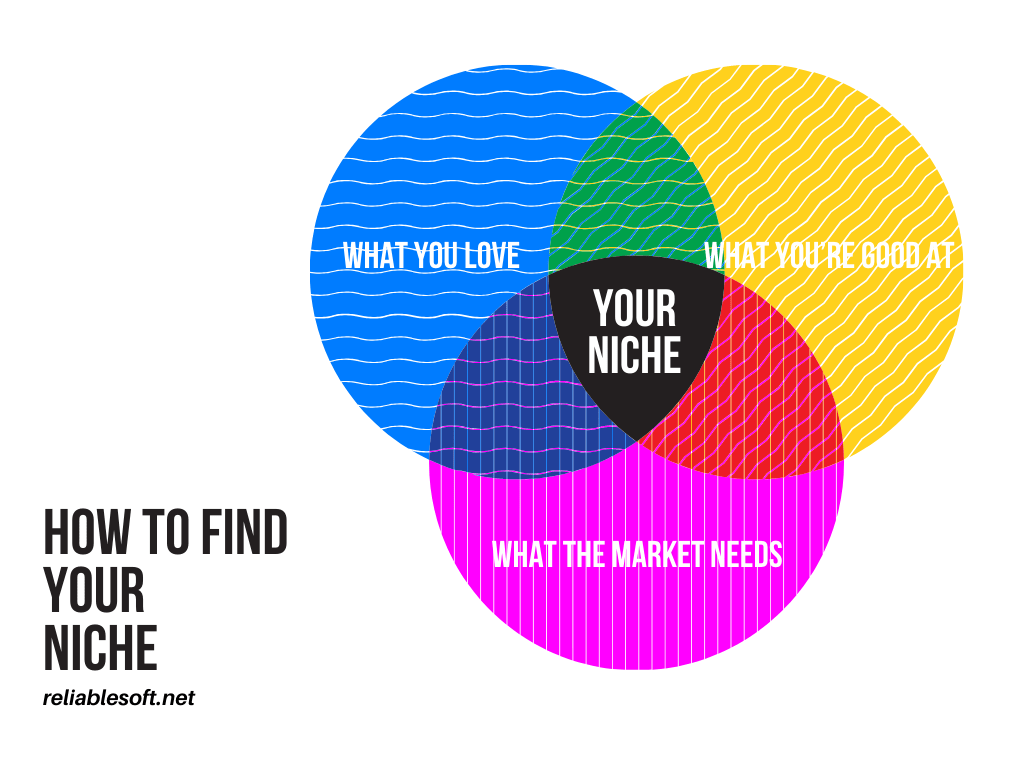
You should understand from the beginning that you don’t have to come up with a unique idea in order to succeed online. If you can do it, then this will give you an advantage but uniqueness is not a requirement for setting up an online business.
You can take an existing idea and improve it or create something (a product, blog, service) that is better from what is already available on the Internet.
Some guidelines to help you out:
Find what are you truly passionate about
Being passionate about a topic, an activity, a hobby or a product, will help you create a good product or great content that others will find valuable and useful.
Take a few moments and think about what you like doing for fun and how would you like to spend your time if money wasn’t an issue.
Find what you are good at
Do you have any skills that you can use to help others accomplish a task, learn something or solve a problem?
Maybe you like teaching people how to fix things or you like to write good stories to educate people on different subjects.
Find what you believe you are really good and think of ways you can utilize your skills to create a product that people will be willing to pay money to get it.
Are you an expert?
Is there an area that you have the right training, qualifications, and experience to be considered an expert? This is a great candidate to explore further and find out if you can build a business around it.
The Internet is full of ‘so-called experts’ so if you are a ‘true expert’ on a topic, you will have an advantage over others.
Can you spot any gaps in the marketplace?
Are you looking for a solution to a problem and cannot find a good product or online resource to solve your problem? Can you spot any gaps in any industry that you can fill with a new product? Do you find that online content about a topic is incomplete or something that you can improve?
All these questions will help you generate ideas that can possibly help you find the one idea to turn into an online business. Before, getting too excited, the next step is to evaluate your ideas and decide if it’s good or not.
3. Evaluate your idea
Evaluating an idea means finding out if a particular idea is something that you can turn into an online business that will potentially generate profit.
Follow the steps below to evaluate the potential business success of your idea:
Do a thorough Google search
Naturally, the first thing to do is go to Google and search for keywords related to your idea.
Don’t just type in keywords that are directly related to your niche but search for broad terms and terms that are indirectly related.
Your goal at this stage is to find out what is already available in terms of websites, content, and products.
How many websites can you find on the specific topics, what type of content do they have, do they sell their own products or do they display ads?
Go beyond the first page of Google and look for the second page as well. Some businesses don’t pay the required attention to SEO and while they have good products and content, their search engine optimization techniques are not good enough to rank high on Google.
How would you rate the overall user experience when searching for this information? Can you offer something better to the users?
Search Facebook, YouTube, Instagram, and Pinterest
Perform the same search on Facebook, Youtube, Instagram, and Pinterest. Try to figure out what kind of content is being published on those networks. Is it high-quality videos, is it images, articles, products? How many interactions (likes, comments) do the posts get?
Can you spot something that is missing or that it can be improved?
Perform keyword research
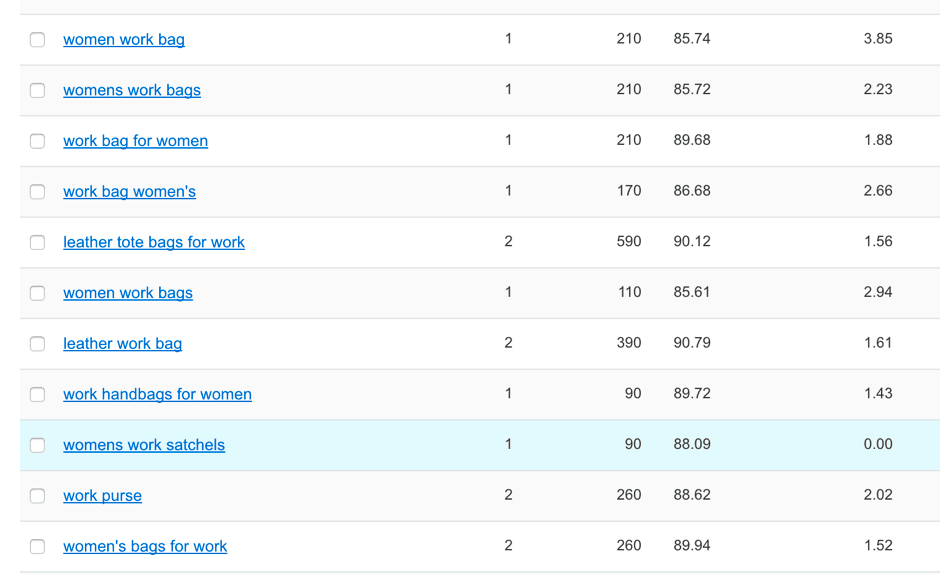
The term keyword research might be unknown to you at this stage but it’s an important step to find out if there is a search demand for your idea.
Through keyword research, you can find out how many people search for particular keywords on Google (and other search engines) per month.
If your chosen topic doesn’t have a decent amount of search volume, then this is a sign that people have no interest in.
Use the resources below to find out how to perform keyword research step by step.
RESOURCES TO LEARN MORE ABOUT KEYWORD RESEARCH
- Keyword research – The 10 steps to follow to perform keyword research.
- Keyword research for eCommerce websites – How to find keywords to use on an eCommerce website.
Get to know important Google rules
Another thing to know is that for some topics Google has strict rules on what websites they show in the search results.
This can have a big impact on the success or failure of your online business because organic traffic is by far the most important form of traffic you can get and without it, your chances of online success are minimal.
For example, if your idea is around health-related topics and this includes weight loss, fitness, nutrition, exercise and any other advice or product that is generally suggested by doctors or other certified professionals, you might want to reconsider it.
Unless you are a certified and recognized doctor, Google will not show your website or products for health-related searches.
So before you continue is good to revise the most important Google rules and make sure that what you have in mind is not against any known Google guidelines or rules.
RESOURCES TO LEARN MORE ABOUT GOOGLE GUIDELINES
Google Search Rates Guidelines – A comprehensive document that explains in detail what Google looks for when assessing the quality of a website.
Do a search on Amazon

If you are considering opening up an online store selling physical products, then you need to search on Amazon and see what others are selling.
Use different keywords to search for products and also look at amazon’s best sellers to get an idea of the popular products per category.
Do a search on popular marketplaces
There are many popular marketplaces you can use to find out what products are being sold online.
Udemy – if you’re thinking of creating an online course you can search Udemy to find out how many courses there are on the chosen topic, how many students they have, their comments, ratings, content, etc.
Codecanyon – If you’re thinking of creating a software product, you can search Code Canyon to find if there are similar products and how many sales they have.
Flippa – Flippa is the most popular marketplace for buying and selling new and established online businesses. Browse through the listings and look at the provided information.

Online businesses that are set for sale have to provide evidence of their sales and traffic and this information can be very useful for you at this stage.
Who knows, maybe you can find a business to buy and grow instead of starting from scratch.
Do an affiliate marketing search
Even if you don’t plan to follow the affiliate marketing model, you can still use the different affiliate marketing sites to find out which products are being sold, their price, the number of providers, and much more useful information.
Visit the following sites and if necessary create a free account to login to their marketplace area:
- Clickbank – for digital products
- Share a Sale – for both physical, digital products and software
- Rakuten Affiliate Network – all kinds of products and known brands
4. Analyze your potential competitors
Once you evaluate your idea using the above techniques, the next step is to do an analysis of your potential competitors.
A potential competitor is one or two companies that are already selling products or services that are similar to what you want to sell.
For example, let’s say you decided to make an online business selling custom-made parrot cages through an online store.
You already evaluated your idea and found out that there is enough demand from users, and that there is room to create a better product.
The next step is to find out more information about your potential competitors. Using different tools you can figure out how much traffic they get, which channels they use to sell their products and how much they spend on online advertising.
You can use the following tools:
SEMRUSH – To find out how much traffic they get and how much they spend on Google advertising.

SEMRUSH is a paid tool but you can register for an account and get a 7-Day Free Trial.
Facebook Ads Library – You can use the Facebook Ads Library tool to check what kind of campaigns and ads your competitors are running on both Facebook and Instagram.
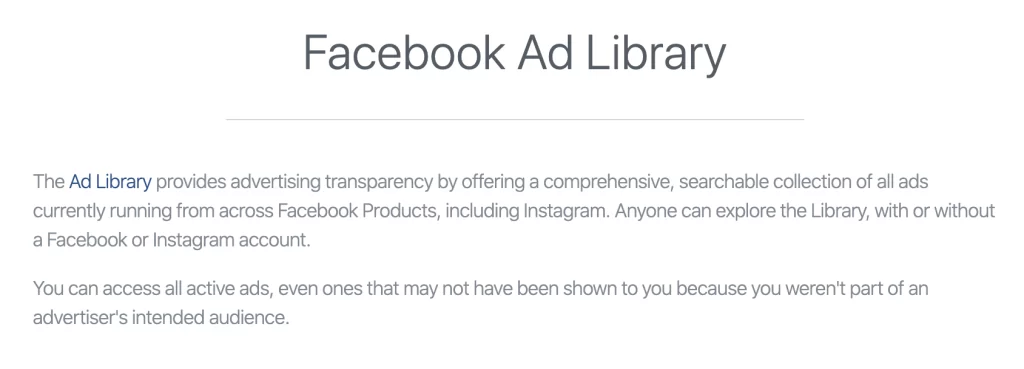
5. Identify your target audience
The final step before actually setting up an online business is to identify your target audience and create buyer personas.
This step is critical because the outcome of this exercise will determine how you will approach the next steps.
What you are looking for at this stage is answers to the following questions:
- Who can potentially visit your website?
- Who can potentially buy your products?
- What is their gender, age?
- Where do they live?
- What languages do they speak?
- What is their education level?
- What is their ethnic background?
- Which social networks are the most likely to use?
- Who are the online influencers of your target audience?
- Which other websites are the most likely to visit?
- Which online forums or groups do they use?
Getting straight answers is not always easy at this stage because you don’t have any data of your own, but nevertheless, you should do this exercise before you get started and enhance it as you go along.
Don’t forget that you can use the findings from Step 4 (competitor analysis) to create a first version of who your target audience is.
At a later stage when you set up your website and start getting traffic, it will be easier to answer these questions. You can ask your customers and community directly via surveys or analyze your social media followers using various tools.
BEFORE proceeding to the next step, you should ensure that:
- You know your niche and evaluated your idea
- There are enough people who are interested in your chosen niche
- You made an initial decision on how you will make money from your business i.e. which model will you follow? Is it affiliate marketing, creating your own product? selling physical products?
- You created an outline of your target audience and buyer personas
- You know the social networks your audience is using
- You have a clear idea of who your competitors are and their online marketing practices.
6. Decide on your brand name and register a domain
Once you get to this point, it’s time for the exciting part and is no other than selecting a name for your brand and registering your domain name.
Things to consider when choosing a brand name/domain name:
- Find something catchy that people will remember
- Keep it as short as possible
- Make sure it’s easy to read, type (examples: yahoo.com, x.ai, apple.com)
- Add a keyword that’s relevant to your niche (examples: teachable.com, healthline.com)
- Don’t use hyphens or numbers — reading it out loud will be a nightmare
You can use different tools to check if a domain name is available but before proceeding, you also need to ensure that:
No other companies are using the same brand name on a different domain – Search for your ‘to be’ brand name of Google and look at the results. If there are other companies using the same brand name that could be a big issue and it’s better to come up with something unique.
Check all social media networks to ensure that the name (handle) is available – you don’t want to register a domain name to find out later that you need to use a different name for your Facebook or Instagram page.
Check that all variations of your domain (i.e. .com, .net, .info, etc) are available – if there is already a company that is using the .com domain, it’s not wise to register a .net domain with the same name. This will confuse both your customers and search engines.
Avoid choosing a country-specific domain – avoid registering a country-specific domain i.e. reliablesoft.co.uk unless you plan to start a local business specific for that region. It is recommended to go with a .com or .net domain.
How to register a domain name for your business
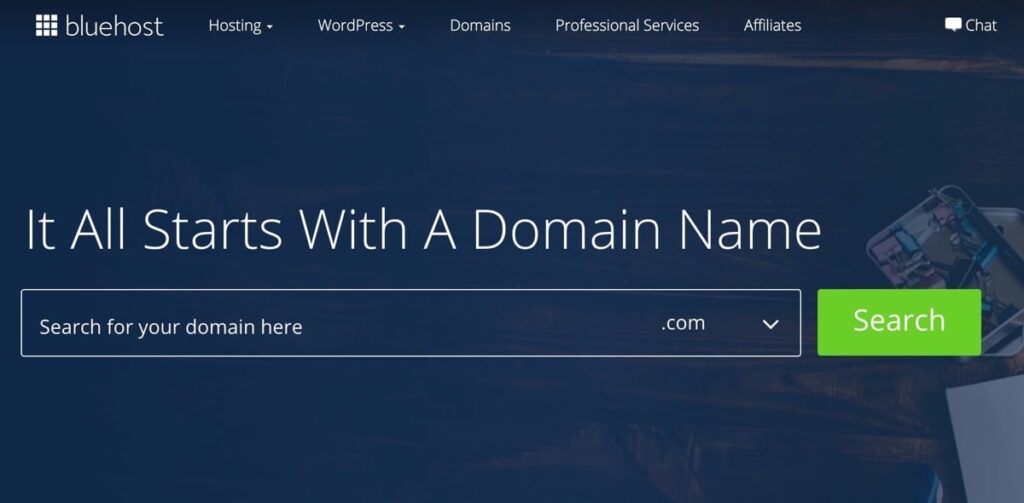
Once you have found the perfect domain name for your business, the next step is to secure it. To do so you need to create an account with a domain name provider.
The process is very easy, all you have to do is provide your personal details, choose your desired domain name and register it.
To get started click here to register a domain name with Bluehost (or you can choose the domain provider of your choice such as GoDaddy, Inmotion Hosting, etc).
PRO TIP: Make sure that you secure your brand’s reputation by registering all the different domain extensions (.com, .net).
7. Setup a website for your business
The next step is to bring your business to life by setting up your website.
If you plan to set up an eCommerce business selling physical products then you have two choices.
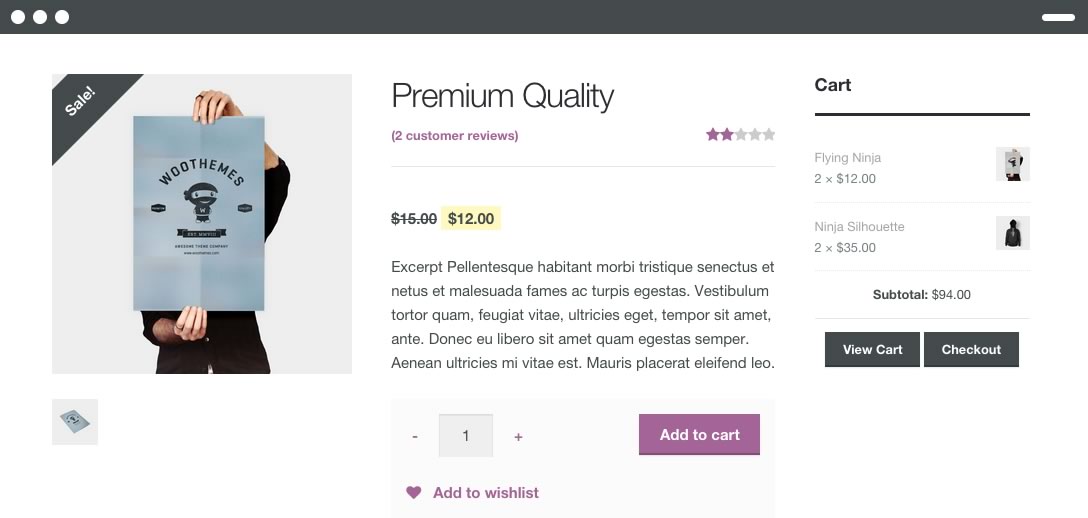
The first choice is to set up your own self-hosted website and use WordPress and WooCommerce to create your shop and the second choice is to use a website builder like Shopify or BigCommerce.
The second choice is faster but as your business grows you will need more flexibility and customization options so it is highly recommended to start with your own WordPress / WooCommerce website.
For other types of businesses i.e niche blogs, websites selling services or digital products (like this one), Amazon affiliate websites, the best solution is to use WordPress.
WordPress is flexible and user-friendly and there are a plethora of read-made themes you can buy for less than $100 and set up a professional-looking website in minutes.
I highly recommend checking out Studio Press Themes. They have great themes that are also optimized for Search engines, something that can prove very valuable as your website grows. I use a studio press theme on this website and on many client websites.
RESOURCES TO LEARN MORE ABOUT WEBSITE SETUP
How to make a website – a comprehensive guide on how to set up a WordPress website for beginners.
8. Learn what digital marketing is all about
Coming up with an idea, registering a domain name and setting up a website is one thing, promoting your business online to get traffic and make sales, it’s a totally different story.
This is where digital marketing comes to the rescue. In short, digital marketing is the process to follow to promote your business online using all available digital channels.
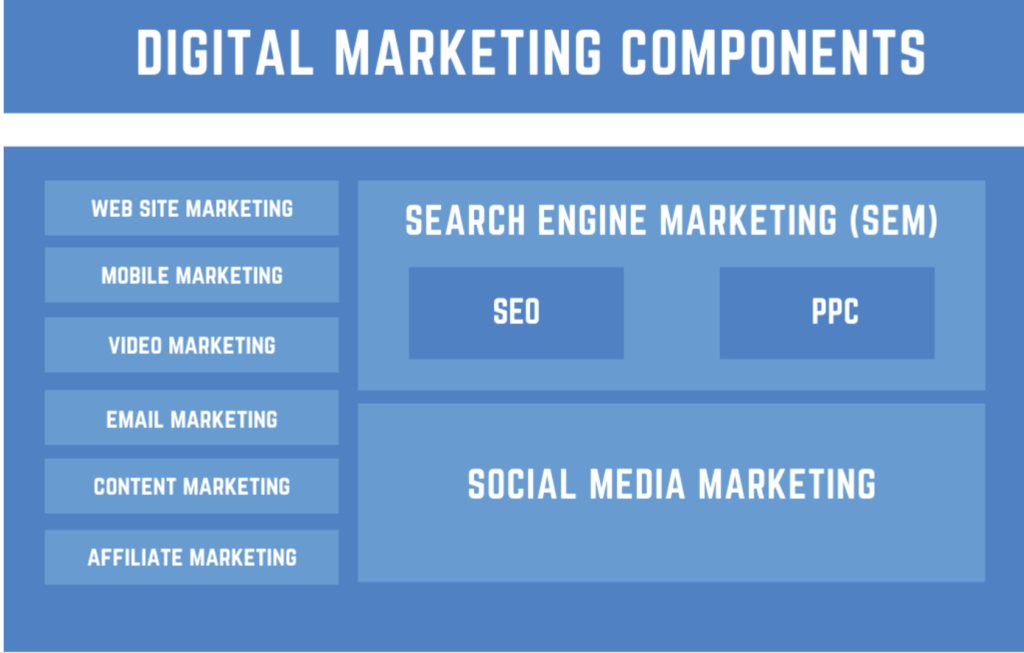
The most important digital marketing components are:
- Website Marketing
- Search Engine Marketing
- Social Media Marketing
- Email Marketing
- Content Marketing
- Video Marketing
Why is it important to have a good understanding of digital marketing?
There are two reasons why it’s important to understand what digital marketing is all about.
First, you’ll get to know how to get traffic, and customers and grow your business.
Second, even if you decide to outsource some of the activities to digital marketing agencies or freelancers, you’ll know what to ask from them, how to monitor their performance, and what to expect in terms of results.
You don’t have to become a digital marketing specialist but as the CEO you need to have some basic knowledge of what digital marketing is and how it works.
RESOURCES TO LEARN MORE ABOUT DIGITAL MARKETING
- Digital marketing checklist – The complete digital marketing checklist for online businesses
- How to learn digital marketing at home – A detailed guide on how to get learn digital marketing at home and for free.
- Best Digital marketing courses – A list of the best online courses to teach yourself digital marketing.
9. Create a digital marketing plan
Now that you have a better idea of what digital marketing is all about, the next step is to come up with a plan.
At this stage, you don’t have to make your plan very detailed but it’s enough to outline which digital marketing channels you will use and in what order.
Some tips to help you out:
Start with Paid Ads
Paid advertising channels like Google Ads, Bing Ads, Facebook Ads, and Instagram Ads work faster than any other channel.
Getting targeted traffic from these channels is immediate but you have to pay every time someone sees (pay per view) or someone clicks (pay per click), on one of your ads.
For these channels to be profitable, you need to sell products that have a high-profit margin and optimize your paid campaigns to keep the customer acquisition costs as low as possible.
The best way to find out if you can make money by selling products or services through ads is to run pilot campaigns and analyze the results.
As a general rule of thumb, increase your ad spending as long as you make a profit from your campaigns. If you find that you’re spending more than what you can make in profit, then consider using other more-cost effective channels to find customers.
Test one channel at a time
Don’t rush into creating campaigns on all channels at once. This is not a good practice even for experienced marketers.
Start with Google Ads and then gradually add Facebook, Bing, YouTube, and Instagram to the mix.
Build brand awareness
One of your digital marketing goals should be to build brand awareness. This means spending time and money at the beginning to make your brand known to as many people as possible.
Facebook brand awareness ads are a great tool to introduce your brand to potential customers.
Build a community
When crafting your promotion plan, you should always remember that building a community around your brand is the best way to guarantee long-term success.
Having people that follow your brand on social networks, search for your brand name on Google and sign up for your newsletter is what will generate constant growth, loyal customers, and more sales.
The tools to use for this are Facebook Ads (with the objective of page likes), SEO (more on this below), and email marketing.
RESOURCES TO LEARN MORE
- How to get followers on Facebook – A case study on how to get your first 10,000 followers on your business page.
- How to run profitable PPC Campaigns – Lessons learned after spending more than 1 million dollars on Google Ads.
10. Optimize your website for Search Engines
Search engine optimization or SEO as it is widely known is by far the most important process to grow an online business.
SEO is suitable for all kinds of websites, all kinds of online businesses, and all platforms.
People use search engines on a daily basis to find answers, products, and ideas and the way to increase the visibility of a website on search engines is through SEO.
SEO will help you get more targeted traffic that will lead to more sales, build a community around your brand and establish your business as one of the leaders in your niche.
SEO is not complicated but it takes time. It may take months to a year for a new website to show up on the top positions of Google but it’s something that you need to do if you want not to be dependent on paid traffic.
The best way to get started with SEO is to follow a step-by-step approach. As you can see below, SEO has three main types: Technical SEO, On-Page SEO, and Off-Page SEO.
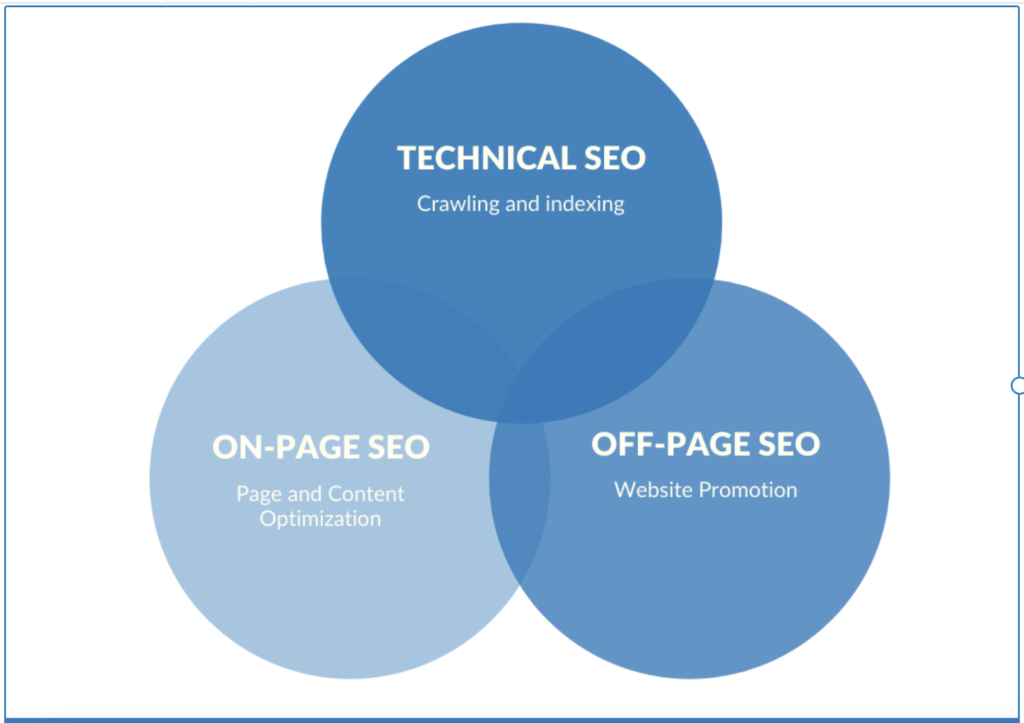
Each component is responsible for optimizing certain aspects of your site but for maximum results, you need to work on all three.
As I frequently explain to clients, SEO is about optimizing a lot of small things on a site that together can make a big difference in organic search and traffic.
RESOURCES TO LEARN MORE ABOUT SEO
- SEO Checklist – The complete SEO checklist to follow and optimize your website for all major search engines.
- SEO Tips for beginners – A gentle introduction to SEO for beginners.
- SEO Best Practices – Best practices to follow to optimize your website for search engines.
- SEO Expert – 10 steps to follow and become an expert in search engine optimization.
11. Create a content marketing plan and start publishing content
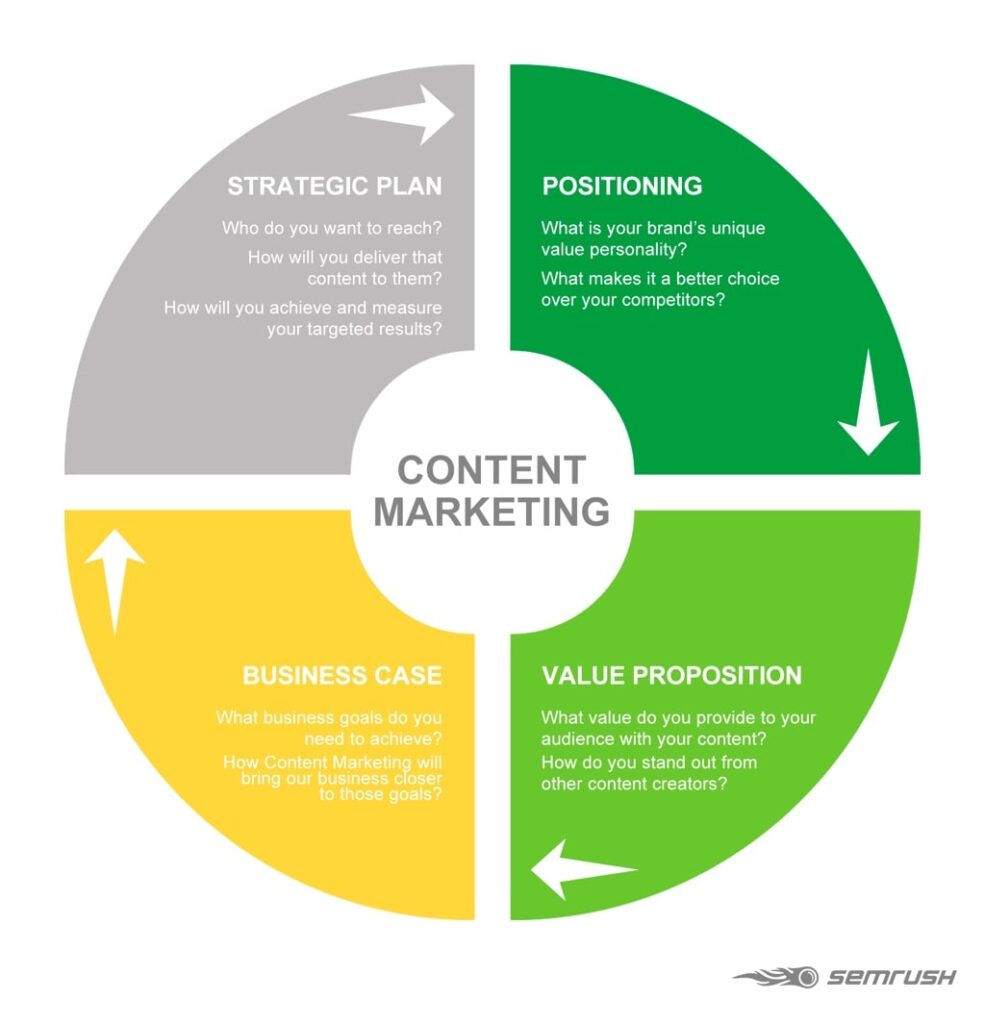
Take a moment and consider these two questions.
What do all marketing channels have in common? They all need content to run.
What do users want when using the Internet? Content to satisfy their needs.
Content can be anything from product information pages, blogs, news, gossip, how-to guides, ad copy, video, podcasts, images, infographics or pdfs.
How do you know what type of content to create to satisfy the needs of the users on any channel? The answer is through content marketing.
Content marketing is about fueling your marketing campaigns with the right type of content. It’s not a standalone channel but it’s a helper process for all other channels.
For example, when you start working on your SEO, you’ll reach a point that your website is fully optimized for search engines.
This means that you provide the right signals to search engine crawlers to help them understand what your website is all about.
So far so good but unless you have a publishing calendar to provide your users and search engines with new content, your rankings will not increase. On the contrary over time, they will decline and your traffic will drop.
It’s a tough process to follow but this is how online marketing works. It’s a continuous race to constantly produce high-quality content to differentiate your business from competitors and win both users and search engines trust.
To make sure that you’ll not lose track of what you have to do, you need to create a content marketing plan.
This can be part of your overall digital marketing plan and should include what type of content to create for each channel, when to publish it and how to measure the results.
It doesn’t have to be something complicated, an excel sheet with dates is enough to get started. What is more important at this stage is to start publishing content on a regular basis and not get stuck in planning.
In fact, from experience, this is one of the most common reasons many startups fail. They either fail to execute their plan or underestimate the cost and effort needed to provide high-quality content for all their marketing needs.
To learn more about content marketing I strongly recommend following a course (there are some great FREE courses in the list below) so as to get an idea of how to create a content marketing plan and how to correctly estimate the time and cost to run content marketing.
RESOURCES TO LEARN MORE ABOUT CONTENT MARKETING
- Best Content Marketing Courses – The 10 best courses to become an expert in content marketing.
- Content Marketing Tips – 15 actionable tips to get started with content marketing.
12. Establish your social media presence
There are many ways to utilize social media networks to grow your online business.
My recommendation is to follow these steps:
Secure your presence on ALL available social networks – You need to do this from the beginning to ensure that no other company will register your brand handle. So, make sure that you create business pages on all available networks and not just the ones you plan to use.
The most popular today are Facebook, Twitter, Instagram, Pinterest, LinkedIn, TikTok, YouTube, Vimeo, Snapchat.
Update your business information on all social networks – Besides registering on all networks, you also need to make sure that your business information is accurate and up-to-date.
For branding purposes, use the same logo and background image (cover image) on all networks. Make sure that both the logo and images are representative of your brand.

Keep your social media pages fresh – Adding fresh content to your pages is important because it is very likely that potential customers will check your FB page before making a purchase.
Having empty pages or pages with outdated content is a sign of abandonment and this is not good for establishing user trust.
In addition, when you update your social media pages regularly they will show up on the first page of Google when users search for your brand name. This is very important because you can control what users will read when doing a brand search.
There are tools like buffer, HubSpot, and others you can use to schedule your social media posts and create a social media calendar.
Use paid ads to get more followers and show your ads to potential customers – As mentioned above, one of the best ways to raise brand awareness and start making product sales is through Facebook paid ads.
You can initially use FB ads to grow your following and then run targeted campaigns to show your ads to people that match the profile of your target customer (as identified in step 5 above).
RESOURCES TO LEARN MORE ABOUT SOCIAL MEDIA MARKETING
- How to get followers on Facebook – A case study on how to get your first 10,000 followers on your business page.
- Social media marketing for beginners – An introduction to social media marketing for beginners.
13. Grow your email list
Despite the rise of social media networks in the last decade, one of the most effective sales channels is still email.
A lot of online businesses make millions of sales per year on email alone and it’s one channel you definitely need to utilize.
Email marketing is a must for any type of online business.
Through email marketing, you get a chance to communicate, educate and inform your audience and this helps in creating a community around your brand that will eventually translate to more sales.
One of the most challenging parts of email marketing is to get people to sign-up on your email list.
People will not just sign up to your list to get another email from you unless you can provide value to them.
The best ways to grow your email list are:
Offer users an incentive to sign up – great options that worked well for us are free ebooks. Tens of people sign up to your newsletter to get our free guides.
Place the sign-up boxes above the fold and in visible places – Make sure that all your visitors can see your email sign-up boxes as soon as they visit your site on both desktop and mobile.
Use exit popups – An exit popup is shown when users try to leave your website. It does not impact their experience while browsing your site and they are very effective when it comes to email list building.
RESOURCES TO LEARN MORE ABOUT EMAIL MARKETING
Email marketing strategies for small businesses – An introduction about how small businesses can take advantage of email marketing.
14. Optimize your website for conversions
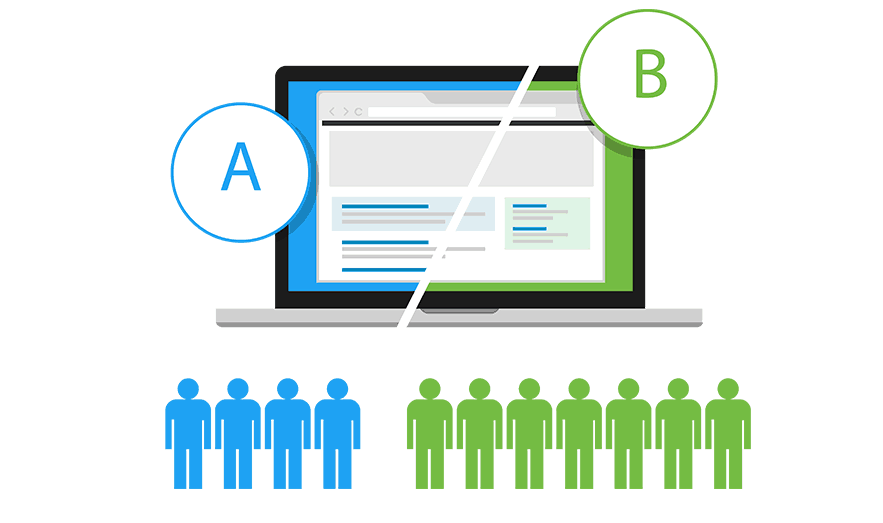
One of the most common reasons many online businesses fail is the lack of conversion optimization.
Conversion optimization is the process of increasing your conversion rates without increasing your traffic. In business terms, this means lowering your customer acquisition costs.
Consider this example:
Company A spends $20 for 10 visits. Out of the 10 visits, 2 people buy a product for $40. The cost of getting a customer is $10 and the total revenue is $80.
Company B spends $20 for 10 visits. Because of conversion optimization, out of the 10 visits, 5 people buy a product for $40. The cost of getting a customer is $4 and the total revenue is $200.
With the same amount of visits, company B makes 3.5 times the profit. This is how powerful conversion optimization is but unfortunately, most business owners ignore it.
They only concentrate on increasing traffic to a website rather than increasing conversions and this is a HUGE mistake.
How does conversion optimization work?
There is no magic formula to follow and increase your conversion rates. Each website is different and there are a lot of factors that affect conversions like the price of a product, the type of product, the quality of the product, the reputation of the vendor and many others.
This is where A/B testing comes to the rescue. With A/B testing you change parts of your website and measure the effect on your traffic and conversions.
It’s not an easy task to do, you have to be careful to test the right things and measure them correctly but it’s definitely the way to go.
You can use the resources below to learn more about A/B testing and conversion optimization but in general, the most common areas to focus and optimize are:
- Landing pages
- Product pages
- Cart and Checkout pages
- Website Main menu
- Website mobile pages
RESOURCES TO LEARN MORE ABOUT CONVERSION OPTIMIZATION
- A/B Testing Principles – Optimize Your Marketing and Skyrocket Conversions.
- How to increase landing page conversion rate – How to Improve Your Landing Page Conversion Rate by 387%
15. Get professional help
You cannot grow an online business alone. Even if you become an expert on entrepreneurship and digital marketing, at some time as your company grows, you’ll need the help of a dedicated team.
Depending on the size of your company and budget, you have different options:
Hire freelancers – You can find freelancers for any kind of online work on websites like UpWork, Pay Per Hour to help you with specific tasks.
Hire consultants – You can hire experienced consultants to help you create a strategy so that every activity you do is working towards your overall goal. You can then decide to implement the plan yourself or hire freelancers to help you.
Hire a digital marketing agency – a full-service digital marketing agency (like ours), can offer you all the services you need. From strategic planning to implementation so that you don’t have to worry about hiring different people and managing the different processes.
The cost of outsourcing to a freelancer or agency can vary from a few dollars per hour to hundreds of dollars per hour but what is more important is to find the right people that can deliver measurable results and not promises.
Is it an online business for you?
Now that you know what it takes to start and promote an online business, you can safely decide if running an internet business is for you or not.
Some additional pointers to help you make up your mind:
Running an online business means spending the majority of your time in front of a computer monitor.
For some people, this is fun but for others is overwhelming. If you cannot stay put for a long time and prefer to work outdoors then this is not the right business for you.
Running an online business from home is a lonely business. While it is great to run your own business from the comfort of your own home, it’s not for everyone.
Skype sessions and virtual meetings don’t replace ‘real’ inter-personal communications so if you are the person that needs to talk and network with people face-to-face, the online business model may not be the best solution for you.
Competition is more than you can imagine. Anyone can start an online business. In real numbers, this translates to billions of people around the globe.
Of course, not everyone will do it for business purposes but it’s a fact that there are around 2 billion websites on the Internet today and around 3 million are eCommerce websites.
You won’t have to compete with all of them but for sure, you’ll not be alone in your niche.
Nevertheless, running your own business is a great experience and if you do things correctly and in order, there is nothing stopping you from running a profitable online business.
How much does it cost to start an online business?
The cost to start an online business can be from a few dollars to hundreds of thousands of dollars. It depends on the type of business you want to start.
Let me give you some examples:
- Cost of registering a domain name for your business – $15 per year (some hosting providers give this for free).
- Cost of setting up a WordPress blog – It can be as low as $2.75 per month including domain registration.
- Cost of a professional WordPress theme – around $100 to get a professional and optimized theme.
- Cost of setting up a self-hosted eCommerce business (WordPress and WooCommerce) – You can get a theme for $100 or a custom-made website ($2000-$10000 depending on requirements and functionality).
- Cost of setting up a self-hosted eCommerce business (Shopify) – $29 – $299 per month (depending on the size of your store).
So, while you cannot start an online business with no money, the initial cost is affordable for everyone.
How much money can you make online?
The short answer is from zero to millions of dollars per year. It depends on the type of business, business model, products, profitability, and many other factors.
Let me give you some examples for inspiration:
- On some of my sites, I use AdSense to make money.
- On this website, I make money by selling my online SEO courses and digital marketing services.
- Yoast makes money by selling WordPress Plugins and online courses.
- Syed Balkhi makes millions of dollars per year through his SaaS companies.
- Patt Flynn makes money through affiliate marketing and online courses
- A lot of my clients make money by selling physical products through eCommerce Stores.
The possibilities to make money with an online business are endless.
RESOURCES TO LEARN MORE ABOUT MAKING MONEY ONLINE
- What is Google AdSense – What is Google AdSense and how does it work?
- Google AdSense Case Study – How to make your first $100K with Google AdSense.
Key Learnings
Starting an online business is not impossible, even if you know nothing about businesses and entrepreneurship.
You don’t need a college or university degree but you have to be willing to work hard to learn how to become an online entrepreneur.
The ‘recipe’ is the same of all kinds of businesses:
- Come up with an idea
- Evaluate your idea
- Decide how you will make money
- Setup a website
- Promote your website to get traffic and clients
For each step, there are many things to do to minimize your risks but nobody can tell you in advance if your idea will work or not.
Rather than spending your time wondering, it’s better to get your hands dirty and start testing your ideas.
Maybe you won’t succeed the first time, that’s fine. Most people fail with their first websites but those who win are those that try again.
It took me a couple of years to make my first dollar from online activities but fortunately for you, you can follow the plan outlined in this guide and start a successful online business on your first try!

